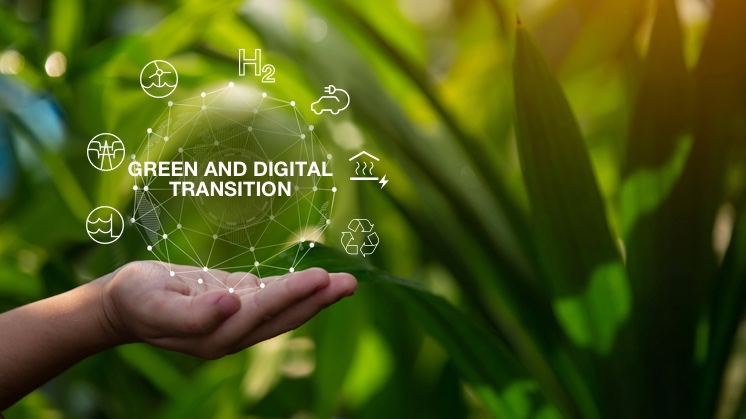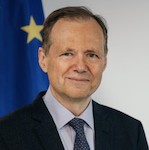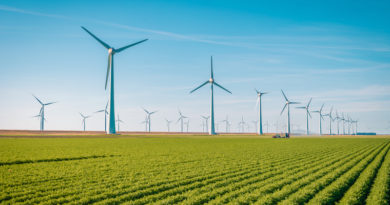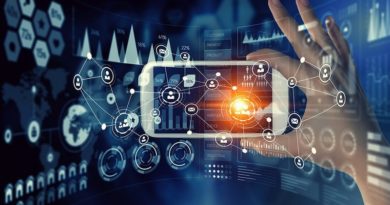
Twin transition as a driving force for a fair and prosperous future
Leading the twin transition in this changing world is the driving force of this Commission. This is our generational task and opportunity. And it is why, since day one, we have been determined to move fast to build a fair and prosperous, green and digital Europe that will last for our children, Ursula von der Leyen, March 7, 2020.
As our President underlined on numerous occasions, the goal of the twin transition is to deliver benefits on all three dimensions of sustainability: economic, social, and environmental. This goal also guides our work on Shaping Europe’s digital future such as the the Declaration on Digital Rights and Principles and the Digital Decade Policy Programme (DDPP) targets and the work on sustainable digital infrastructures.
Digitally enabled innovation and applications will soon deliver large-scale sustainability benefits provided we have the appropriate digital infrastructure and governance.
Let us take inspiration from the recent pandemic. Supercomputers contributed to the vaccine development, secure digital systems enabled the EU Digital COVID certificate, and telecommunication and web technologies allowed kept people working and schooling. A proper governance is needed to minimise undesirable effects such as stimulating unsustainable business or consumer behaviors. We have learnt these lessons with the online platforms and that is why the principles behind the Digital Services Act and Digital Market Act, the AI Act and Data Governance Act and Data Act will also be useful for the efforts in ensuring the goals of the twin transition.
DG CONNECT, in cooperation with many other Commission services, is actively contributing to the twin transition. A prime example on ongoing efforts in the field of the twin transition is the Destination Earth Initiative which aims to develop a digital model of the Earth to help monitor, model, and predict natural and human activities, and, to develop and test scenarios for a more sustainable future. Another example is the Digital Product Passport (DPP), which aims to support the products’ sustainability and to enable sustainable business models, e.g., Product-as-a-Service.
Realising the benefits of the twin transition
Minimising the conflict of the two transitions: As mentioned in the Strategic Foresight Report 2022 – (SFR’22), the digital footprint is estimated at 3% of total GHG emissions and an ever-increasing amount of eWaste. That is why DG CONNECT has taken ambitious commitments towards data centers in the EU to become climate neutral by 2030 and to aim with our European Processor Initiative to improve digital energy and material efficiency. The Digital Decade Targets also aim at the sustainability of digital infrastructures. In our cooperation with other services, we work to improve the eco-design and material efficiency of electronics and support the right to repair of EU citizens.
Maximising the synergies: The potential of emission reduction using existing technologies is estimated at 15% of total GHG emissions by 2030. For example, digitalising energy grids can reduce leakages, enable their stability, and support consumers to manage energy consumption and seamlessly integrate their (micro) production. A digital twin of a building can reduce energy use by up to 17% and cut costs by 15-25%.
Deploying smart mobility can cut commuting times by 15-20%. Many more examples and targets can be found in the SFR’22, Action plan on Digitalisation of Energy Systems and many specialised reports, e.g. Digital with Purpose-Smarter2030.
So what do we need to realise this digital ‘enablement’ potential and harness the benefit of such green digital solutions?
First, we need to be able to develop and agree on science-based metrics to measure the environmental impact of digitalization. Such metrics are essential to ensure sustainable financing for digitalisation with proven positive impact. For, Commissioner Breton launched the European Green Digital Coalition of major ICT companies that committed to working with expert organisations on such metrics. The first results are expected this year. This work has been also requested by the December 2020 Council Conclusions and is currently supported by European Parliament Pilot Project. We are also working with our DG FISMA colleagues to make proven green digital solutions eligible under the EU Taxonomy.
Second, we need to deploy at scale sustainable digital infrastructures supported by a skilled workforce and proper governance. For, the DDPP and NextGenerationEU are key programmes. The Digital Europe Programme supports the deployment of digital innovations such as the Destination Earth and Digital Product Passport, sustainable cloud and IoT applications, blockchain infrastructures (e.g.EBSI), and green dataspaces.
Ensuring just transition and protecting democracy
The fairness and the social impact of the twin transition will be critical for its success. Yet, many fellow citizens question climate change science and the evidence behind twin transition policy measures. We recognise that we have a problem with misinformation in our media, that has also significant impact on our democracy. We need to act to protect our media’s independence and pluralism from the political political or other type of interference and at the same time ensure that our media is transparent and not ‘directing’ our citizens.
This is one of the main goals of our Media Freedom Act. Human rights-centered policy is a pillar of the EU’s approach to digital transformation that I am privileged to lead.
In conclusion, let me reiterate that properly governed digital transformation is key to attaining the EU Green Deal Goals. At the same time, we must harness the opportunities that the green transition is providing for the digital sector. Digital market players including start-ups and SMEs can bring new green digital solutions faster to the market. All industry sectors can to reach their climate and ESG targets with proper use of digital solutions. In other words, the green transition is important for achieving also the digital decade targets.




